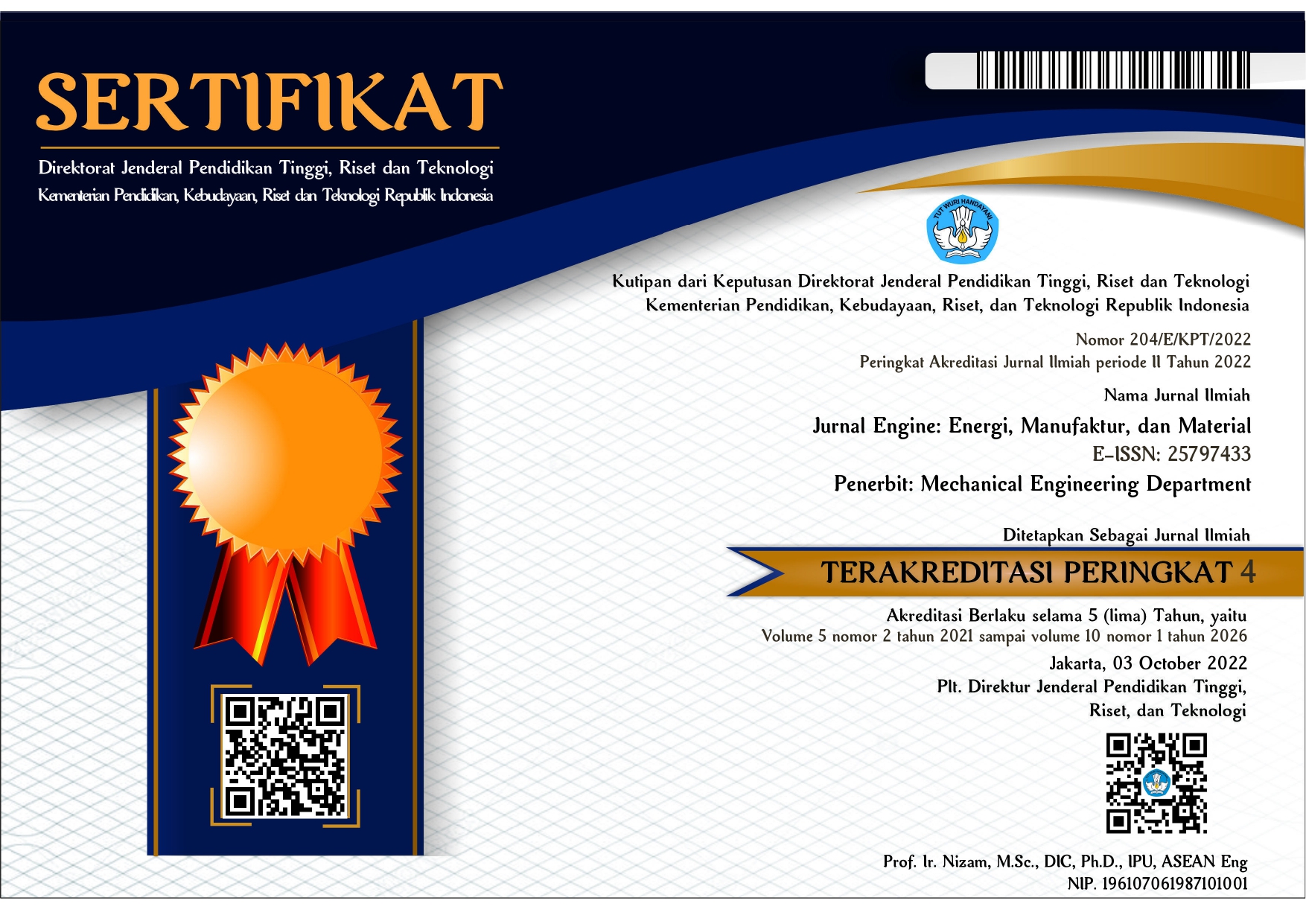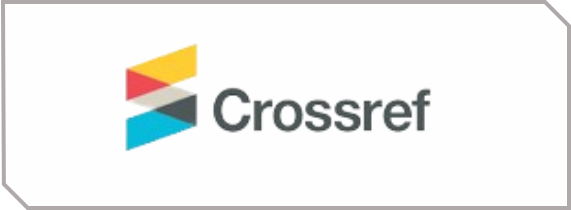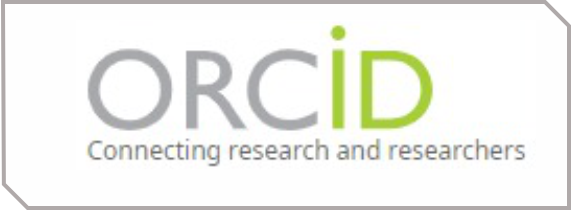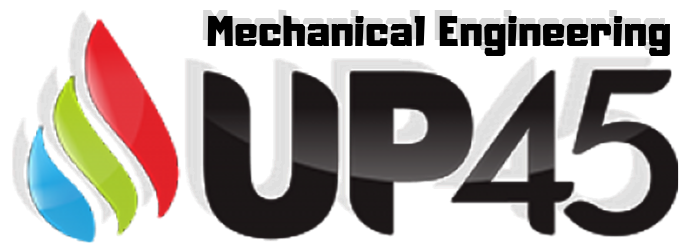Analisa Pengaruh Parameter Proses Terhadap Uji Tarik Produk Hasil 3D Printing Berbahan Polylatic Acid
DOI:
https://doi.org/10.30588/jeemm.v5i2.877Keywords:
Fused Deposition Method, 3D technology printing, tensile testAbstract
Fused Deposition Method (FDM) is one of the additive manufacturing methods or methods used by 3D printers. This FDM technology can produce models with a fairly good level of accuracy and strength. However, until now information about the magnitude of the value of accuracy, and the value of strength is very minimal. Because of this, it is necessary to do a test to determine the strength value of the specimens produced using 3D technology printing. The tests carried out aim to obtain settings optimal parameters on a 3D printer using PLA material which is measured by the magnitude of the tensile strength value of the resulting product. The test is carried out by measuring the amount of stress that occurs when the tensile test is carried out. The test was carried out using 81 samples that were printed using the parameters of infill print speed, fill density, extruder temperature, and layer height. Based on the test results, the highest stress value is 1.092 N/m2 with a combination of parameters infill print speed 60 mm/s, fill density 40%, extruder temperature 200oC, and layer height 0.1 mm. The results of the analysis show that the parameter extruder temperature has the greatest influence on the magnitude of the tensile test value, while the layer height parameter has the smallest effect on the value of the test specimen.
References
Annual Book of Standar, D 638, (2004). Standard Test Methods for Tensile Properties of Plastics, ASTM.
Callister, William, J. (2001). Fundamentals of Materials Science and Engineering. New York: John Wiley & Sons, Inc.
Gebisa, A.W. and Lemu, H. G. (2019). Influence of 3D Printing FDM Process Parameters on Tensile Property of ULTEM 9085. Procedia Manufacturing, vol. 30, pp. 331–338.
Hasdiansah & Herianto. (2018). Pengaruh Parameter Proses 3D Printing Terhadap Elastisitas Produk yang dihasilkan. Seminar Nasional Inovasi Teknologi. Prosiding SEMNAS INOTEK, Vol. 02, No. 1 (pp 187–192). Kediri: Innovation of Green Technology for Smart City- UN PGRI Kediri.
Ivandiaz, (2020). Analisis Parameter 3D Printing Material ABS Terhadap Kekasaran Permukaan Produk Menggunakan Metode Taguchi. Malang: Skripsi Jurusan Teknik Industri, Universitas Brawijaya.
Jain, P., and Kuthe, A. M. (2013). Feasibility Study of Manufacturing Using Prototyping: FDM Approach, Elsevier, Volume 63, Pages 4-11.
Kamsiati, E., Herawati, H, dan Purwani, E.Y. (2017). Potensi Pengembangan Plastik Biodegrable Berbasis Pati Sagu dan Ubi Kayu di Indonesia. Jurnal Litbang Pertanian Vol. 36, No. 32.
Masood, S. H. (1996). Intelligent Rapid Prototyping with Fused Depositiom Modelling. Rapid Prototyping Journal Vol. 2, pp.24-33.
Montgomery, D.C. (2001). Design and Analysis of Experiments. New York: John Willey and Sons, Inc.
Ngo, T.D., Kashani, A., Imbalzano, G., Nguyen, K.T.Q., and Hui, D. (2018). Additive Manufacturing (3D printing): A Review of Materials, Methods, Applications and Challenges. Composite Part B: Engineering ScienceDirect, Volume 143, pages 172-196.
Noorani, R. (2006). Rapid Prototyping Principles and Applications. New York: John Willey&Sons.Inc.
Nur, S.M. (2009). Aplikasi Program Minitab 15: Statistika untuk Perancangan Percobaan. Jakarta: PT. Calprint Indonesia.
Srivatsan, T.S., and Sudarshan, T.S. (2016). Additive Manufacturing Innovations, Advantages, and Applications 1st Edition. CRC Press.
Wahjudi, D., San, G.S., Pramono, Y. (2001). Optimasi Proses Injeksi dengan Metode Taguchi. Jurnal Teknik Mesin Vol.3, No. 1, pp 24-28.
Yuan, L. (2008). A Preliminary Research on Development of a Fiber-Composite. Curved FDM system, National University of Singapore.
Downloads
Published
How to Cite
Issue
Section
License
Authors who publish with Jurnal Engine: Energi, Manufaktur, dan Material agree to the following terms:
Authors retain copyright and grant the Jurnal Engine: Energi, Manufaktur, dan Material right of first publication with the work simultaneously licensed under a Creative Commons Attribution 4.0 International License that allows others to share (copy and redistribute the material in any medium or format) and adapt (remix, transform, and build upon the material) the work for any purpose, even commercially with an acknowledgment of the work's authorship and initial publication in Jurnal Engine: Energi, Manufaktur, dan Material. Authors are able to enter into separate, additional contractual arrangements for the non-exclusive distribution of the journal's published version of the work (e.g., post it to an institutional repository or publish it in a book), with an acknowledgment of its initial publication in Jurnal Engine: Energi, Manufaktur, dan Material. Authors are permitted and encouraged to post their work online (e.g., in institutional repositories or on their website) prior to and during the submission process, as it can lead to productive exchanges, as well as earlier and greater citation of published work (See The Effect of Open Access).


















